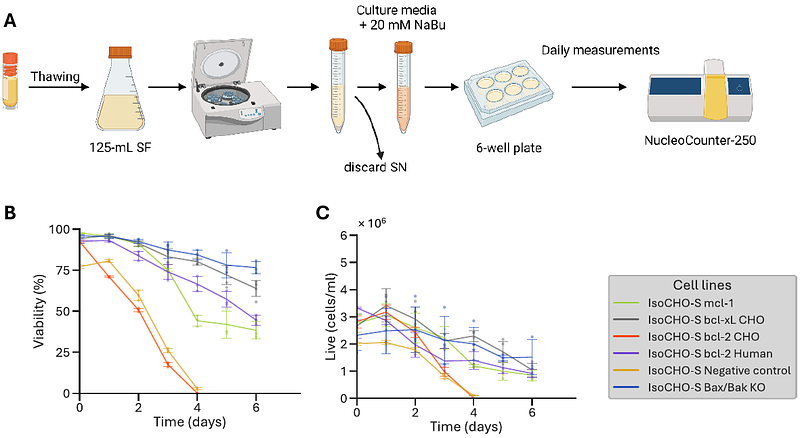Evaluating apoptotic gene efficiency for CHO culture performance using targeted integration

Evaluating apoptotic gene efficiency for CHO culture performance using targeted integration
Catalan-Tatjer, D.; Ganesan, S. K.; Martinez-Monge, I.; Grav, L. M.; Lavado Garcia, J.; Nielsen, L. K.
AbstractChinese hamster ovary (CHO) cells have long been the favoured platform for producing complex biopharmaceuticals such as monoclonal antibodies (mAbs). Cell death is a critical factor in all CHO cultures, dictating duration until harvest in batch cultures and viable cell density in perfusion. The programmed cell death, or apoptosis, pathway has been widely studied due to its relevance in affecting cell culture performance and the extensive knowledge about its protein-to-protein interaction network. However, clonal variation seen with random integration has confounded results and it remains unclear which effector genes should be overexpressed. Here, we employed the recombinase-mediated cassette exchange (RMCE) strategy to develop isogenic cell lines expressing one copy of erythropoietin, as model protein product, and various anti-apoptotic genes: bcl-2 from CHO and human origin, bcl-xL from CHO and human origin, mcl-1 and bhrf-1. We tested the generated isogenic cell lines in the presence of sodium butyrate, a well-known apoptotic initiator, in batch culture. The most promising candidates were cultured in fed-batch in the microbioreactor ambr15 system. The observed phenotype varied significantly depending on the overexpressed gene, therefore the metabolic differences were further characterized using multiplexed quantitative proteomics. We showed that overexpressing bcl-2 from CHO origin significantly improved productivity and established a methodology to successfully test candidate genes via targeted integration. This will enable future metabolic engineering strategies to be more comparable and overcome the challenges faced thus far.


